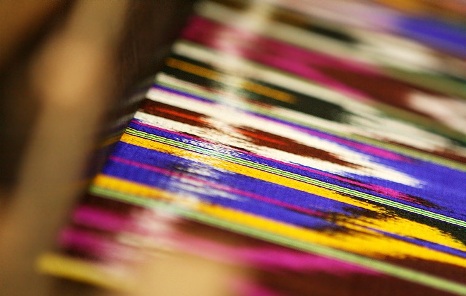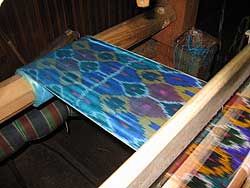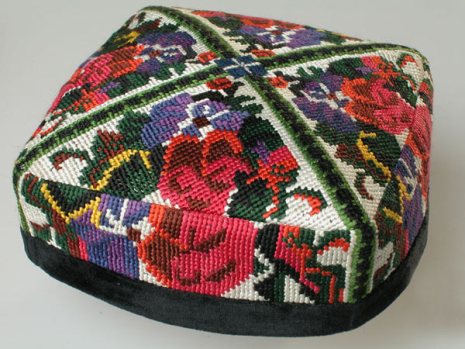|
|
Margilan : the Silk Capital of Central Asia and
2000 years of glorious history
Just like people, cities change over time, and Margilan is now enjoying
its renaissance or "second youth". Interestingly enough, no one
actually knows the exact meaning of "Margilan" but many agree that it
may be a reference to Persian "Marg" which means "green pasture land",
and "Lon" which could be the old Persian definition of locality. If we
combine those two we'd get exactly that – "A Green Place". Look at the
abundance of trees in modern Margilan - it's probably not too far off!
No one can ascertain the exact age of Margilan, but the local
historians have their opinion. They refer to archaeological discoveries
and the fact that Margilan sits on the Great Silk Road and the cities
along this road used to trade with China and silk was one of the main
goods exported from ancient China. That dates back to 5th century AD.
The silk trading route was most probably established in that period and
the Chinese imperial envoy and merchant Zhang Qian was among the first
to visit Central Asia in the first half of 2nd century AD.
Many ancient manuscripts and studies refer to trading with cities
located in Fergana Valley and Babur’s extraordinary book about his life
– "Baburnama" - is among them. He describes Margilan of the 15th
century and talks about silk manufacturers, jewelers, ceramic artists
etc.
By the end of the 19th century Margilan had about 50 thousand in
population and the majority were artisans, merchants and
quite a few silk weavers and manufacturers. Margilan was a pretty well
known center of small businesses and had a few great markets (or
bazaars).

|
|
Hand-made
silk from Margilan
|
Centuries of silk weaving traditions still live and prosper in modern
Margilan. A very unique school of silk weaving produces gorgeous
fabrics that are very popular among tourists and locals alike. Local
silk weaving traditions continue in unique and stunning patterns where
fabrics are clearly distinguishable and technically
sophisticated.

|
|
Yet another
great sample
|
Manufacturing and coloring process is an interesting combination of
very old techniques and unique machinery that was developed locally.
Silk manufacturing process is still mostly manual labor and it is
extremely interesting to watch artisans work. One of the most famous
silk factories in Margilan is family owned and they allow visitors and
tourists to watch the process of creating fabrics, all the way from
silk cocoons to rolls of beautifully patterned fabrics.
No wonder that silk embroidery is also an integral part of the local
artisan market. Suzanis from Margilan are very popular among tourists
and local tour operators often bring visitors directly to artisans’
houses.

|
|
Silk weaving
process
|
Locally manufactured silk is also used for making traditional Uzbek
hats called "Duppi". Colorful silk embroidery makes these tiny flat
hats rather good looking and very popular among tourists.

|
|
Uzbek
traditional hat - "Duppi" |
Even though Margilan’s age is hard to determine, history lives here,
is very palpable and visible in traditional silk fabrics. Many agree
that ancient traditions of silk manufacturing thrive in Margilan and it
is truly the Silk Capital of Central Asia.
|
| | | |